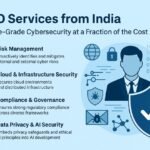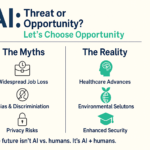“The customer sees only one brand. So should we.”
Recently, I was invited to advise on a critical transformation for a financial enterprise with operations across Asia and the Middle East. The objective seemed straightforward: accelerate innovation while meeting growing compliance burdens.
In the room were accomplished leaders—each passionate, capable, and highly driven:
- The CDO was launching a bold new GenAI-powered onboarding engine.
- The CIO was focused on containerizing infrastructure to modernize legacy systems.
- The CISO was raising alarms about lateral threat movement in their hybrid cloud setup.
- The CDPO had been firefighting a privacy audit related to a cross-border data flow.
Each leader had clarity. But together, they lacked cohesion.
What I witnessed wasn’t incompetence—it was disconnection.
The real issue wasn’t the lack of innovation or controls.
It was fragmented digital trust.
The Future of Enterprise Trust Is at Risk
After over three decades of leading security and GRC transformations across 19+ countries, I’ve learned this:
The biggest threat isn’t a breach. It’s silence between functions.
When AI is designing credit decisions, performing triage in hospitals, and writing policies before humans read them—governance, security, and ethics can no longer sit in separate rooms.
And yet, this is what I still see:
- Security teams unaware of how AI models are trained or deployed.
- Privacy leaders brought in after the product is shipped.
- CIOs modernizing platforms without visibility into third-party AI vendors.
- Boards trying to understand risk using fragmented metrics.
The result? Delayed responses. Regulatory gaps. Customer distrust.
Sometimes, reputational damage that can’t be undone.
We Must Move Toward What I Call GRC 3.0
Governance is no longer just about ticking checklists for ISO or SOC2.
We need a new model—predictive, real-time, and AI-literate.
This means:
- Governance and cyber risk being discussed in the same breath as product and revenue.
- Policy enforcement becoming dynamic, automated, and embedded into workflows.
- Ethical AI no longer being a “nice-to-have” but a boardroom mandate.
- Dashboards that speak to outcomes, not just compliance.
We need leaders who understand that trust is no longer an outcome of compliance. It’s a prerequisite for relevance.
More Titles Are Not the Answer. Clear, Shared Accountability Is.
I’ve been asked often: “Should we hire a CDPO now? We already have a DPO, CISO, and Privacy Counsel.”
My answer is simple: You don’t need more titles. You need alignment.
The CIO is responsible for resilience.
The CDO leads the digital journey.
The CISO protects the infrastructure.
The CDPO upholds privacy rights.
But the customer—and increasingly the regulator—holds all of them accountable for one thing: trust.
Without shared ownership of that trust, you have gaps.
Not in policy.
In perception.
What Boards Must Start Asking Today
If you sit on a board or advise one, I urge you to ask:
- Do our GRC and cybersecurity functions understand the AI pipelines our business depends on?
- Are our privacy, compliance, and cyber teams co-designing controls—or reviewing them too late?
- Are we training leaders not just on risk posture, but on AI decision governance?
- Are our dashboards just reporting “green lights,” or are they revealing underlying dependencies?
If not, your organization is not future-ready.
It may be compliant—but it’s not confident.
This Is the Playbook of Trusted Enterprises
While leading IT GRC and cybersecurity for a $2B+ multinational energy and infrastructure group, I oversaw governance across 64 subsidiaries in 19 countries. It wasn’t the tools that made us secure—it was our unified approach to trust.
- Data privacy was embedded in architecture—not stapled on after.
- AI governance was reviewed alongside financial risk—not in isolation.
- Incident simulations weren’t limited to tech teams—executives participated too.
- Every transformation project had a “trust champion”—not just a project sponsor.
This mindset turned compliance into confidence.
It turned audit readiness into brand assurance.
Final Word: The Era of Silos Is Over
I’ve built cybersecurity and governance programs across industries and borders. And I’ve come to believe this:
The enterprises that will thrive tomorrow are not the most digitized—but the most cohesive.
- If your cybersecurity team doesn’t understand your AI stack, you have a blind spot.
- If your compliance team isn’t at the design table, your controls are reactive.
- If your GRC reporting isn’t unified, your board is uninformed.
- And if your leaders aren’t aligned around trust—you’re not truly secure.
It’s time we stop managing risk in fragments.
Let’s build trust by design, together.
Let’s Discuss:
If you’re a CISO, CDO, CIO, or CDPO—how are you building bridges across roles?
If you sit on a board, is AI governance getting the attention it deserves?
The future isn’t waiting.
Neither should we.


